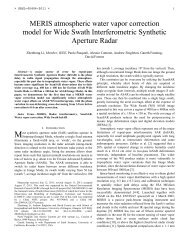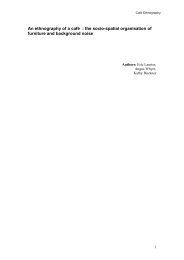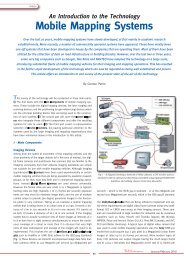Houdini and the wonder of
Houdini and the wonder of
Houdini and the wonder of
Create successful ePaper yourself
Turn your PDF publications into a flip-book with our unique Google optimized e-Paper software.
ecome convinced that reality is inaccessible, that <strong>the</strong>y should ei<strong>the</strong>r become sceptical<br />
philosophers or social constructionists?<br />
Even having been shown how ‘a woman being sawn in half in a box’ works we can sit<br />
back <strong>and</strong> watch <strong>the</strong> show again <strong>and</strong> see <strong>the</strong> magical aspect to it. To watch <strong>and</strong> to<br />
produce magic tricks we, as a competent audience, have to be able to see aspects (not<br />
unlike <strong>the</strong> duck-rabbit diagram or <strong>the</strong> faces/c<strong>and</strong>le-stick picture (Wittgenstein 1953)).<br />
For <strong>the</strong> amazing magic trick <strong>the</strong> o<strong>the</strong>r aspect to <strong>the</strong> trick remains hidden though we<br />
know it surely exists, while for <strong>the</strong> well known one, or <strong>the</strong> one we are taught, we can<br />
see both aspects – that it works <strong>and</strong> how it works 13 . Things take a strange turn at this<br />
point in that does this lead us into equating ordinary members with magicians: <strong>the</strong>y<br />
know how to do a trick <strong>and</strong> <strong>the</strong>y can recognise <strong>the</strong> illusion that a trick produces. Once<br />
again we have make a distinction between <strong>the</strong> illusion which is <strong>the</strong> object <strong>of</strong> magic<br />
<strong>and</strong> say a turn at talk which is <strong>the</strong> object <strong>of</strong> conversation. If ethnomethodologists are<br />
<strong>the</strong> ones who are amazed by ordinary life <strong>the</strong>n <strong>the</strong>y are in some senses its audience.<br />
In a reversal <strong>of</strong> <strong>the</strong> skeleton keys, rejigged c<strong>of</strong>fins, secret drawers, <strong>and</strong> altered<br />
shuffles <strong>of</strong> magic, Garfinkel had a<br />
box <strong>of</strong> special equipment that he<br />
used in <strong>the</strong> teaching <strong>of</strong><br />
ethnomethodology. To make<br />
intelligibility anthropologically<br />
strange, students were given prism<br />
glasses that flipped <strong>the</strong>ir vision<br />
upside down which Garfinkel asked<br />
<strong>the</strong>m to wear while fetching a cup<br />
<strong>of</strong> water from a tap or being shown<br />
a spot to sit on a wall by ano<strong>the</strong>r<br />
student. Directions in <strong>the</strong>se<br />
instances became impossible to<br />
follow by normal means. Chess<br />
games were also made deeply<br />
problematic by donning <strong>the</strong> inverting lenses. It made apprehensible <strong>the</strong> embodied<br />
ra<strong>the</strong>r than ‘mental’ aspects <strong>of</strong> playing a game with rules. Students were dazed,<br />
bemused <strong>and</strong> quite <strong>of</strong>ten amazed during <strong>the</strong>se sessions. Students were also given<br />
headphones <strong>and</strong> a microphone with a delay loop that made <strong>the</strong>ir wearer hear <strong>the</strong>ir<br />
voice a second or so after <strong>the</strong>y spoke. It made apprehensible that without noticing it<br />
you are listening to what you say as you say it, <strong>and</strong> with your hearing-what-is-beingsaid<br />
disrupted speaking at any length quickly becomes problematic. The equipment<br />
showed <strong>the</strong> potentially bewildering equipmentality <strong>of</strong> human practice – we do not<br />
think <strong>of</strong> seeing as something we have to learn with eyes as equipment. Much like <strong>the</strong><br />
breaching experiments mentioned earlier, Garfinkel is pushing in a different practical<br />
way against a <strong>the</strong>oretical account <strong>of</strong> how we make things intelligible.<br />
Think <strong>of</strong> <strong>the</strong>se as jobs <strong>of</strong> bodies – not anatomists’ bodies, or biologists’ bodies,<br />
but work’s bodies. The bodies <strong>of</strong> practices. These bodies have eyes that are<br />
skills; eyes that are skills in <strong>the</strong> ways that eyes do looking’s work. Where seeing<br />
is something more, o<strong>the</strong>r <strong>and</strong> different than formally analytically describable<br />
13 Or are <strong>the</strong> incommensurate ways <strong>of</strong> seeing – to look in one way excludes looking in <strong>the</strong> o<strong>the</strong>r?<br />
14
















